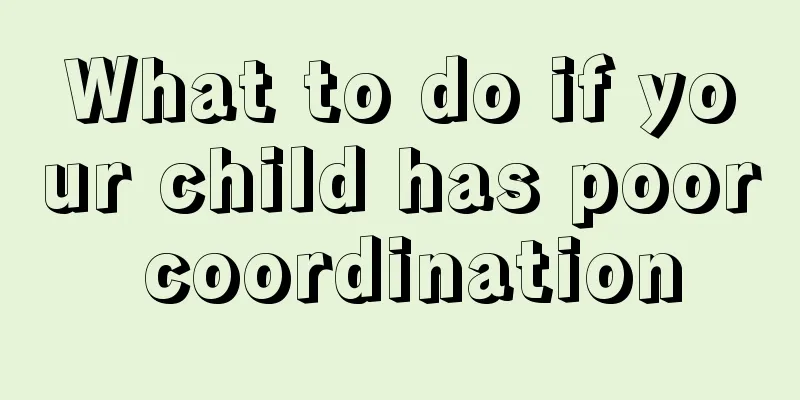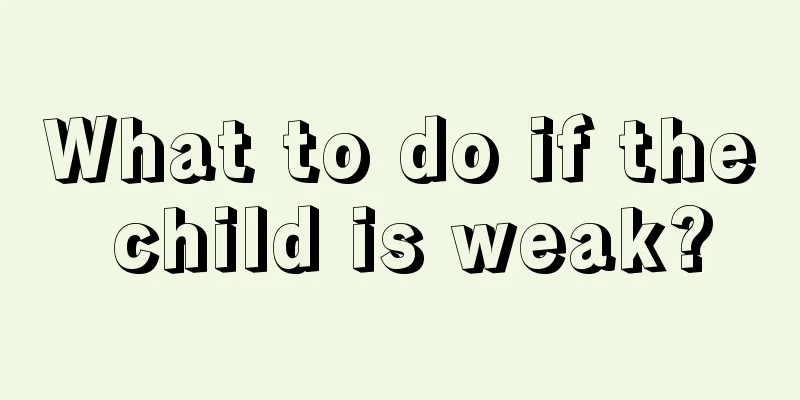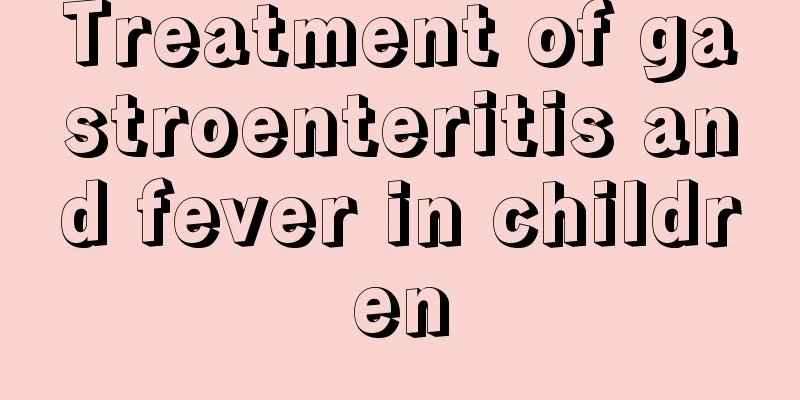Why does my child have a stomachache after eating?

|
The process of a child's continuous growth is also a process of continuous improvement of the body's organs and systems. In this case, due to poor body resistance, it is easy to cause stomach pain due to various factors. It is acceptable if it happens occasionally, but some children will have stomach pain as soon as they eat. Parents will definitely want to know the reason. So, why do children have stomachaches after eating? Let’s take a look at the reasons below. 1. Intestinal spasm. This is the most likely cause of stomach pain in children. In the pediatric surgery clinic of the Children's Hospital, most of the stomach pains in children are caused by pediatric intestinal spasms (intestinal cramps), which occur in children ranging from 1 or 2 years old to 11 or 12 years old. The most common age is between 4 or 5 years old and 5 or 6 years old. The main cause of intestinal cramps is improper eating (such as eating too much; eating a lot of cold food, etc.). At this time, the child has no specific tenderness points (his stomach is soft), can eat and drink, and is in good spirits. The treatment method is to take belladonna together with phenergan, chlorpheniramine, etc. When this happens, parents are very anxious, but generally there is no big problem.2. Acute pancreatitis. Children aged 2 or 3 do not get the disease very often, but the incidence rate is relatively high in children aged 4 or 5 and above. The causes are mostly overeating, and most of them are greasy and indigestible food; pancreatitis caused by biliary ascariasis blocking the bile duct (this situation is not common); leukemia patients used L-mendomycin. The symptom is pain on the upper left side of the belly button. The parents found that the child ate a lot and had a stomachache (crossed his legs), and would not let anyone touch the upper left side of his belly button. Pancreatitis can usually be cured, but acute hemorrhagic necrotizing pancreatitis can quickly lead to shock. Symptoms include severe abdominal pain (the child does not allow parents to touch his stomach), vomiting, poor mental state, and gray complexion. If rescue is not timely, it may result in death. The first step in first aid for pancreatitis is fasting, followed by adjusting the liquid diet. 3. Enteritis. The main symptom is pain in the entire lower abdomen centered around the navel, accompanied by vomiting and diarrhea. The stomach feels soft and there is no fixed tender point. Enteritis is usually caused by eating unclean food. Just pay attention to food hygiene in daily life.4. Appendicitis. The main symptom is pain in the right lower abdomen. Children aged 2 or 3 years old have abdominal pain and obvious abdominal distension, accompanied by vomiting. There is tenderness in the entire abdomen and they do not allow touching. They may have a fever of more than 38 degrees. Children aged 2 or 3 should pay more attention to it because it is easy to cause perforation and peritonitis. 10 Children aged 18 and above who suffer from appendicitis initially experience pain in the upper abdomen (or stomach pain), which shifts to the right lower abdominal pain after a few hours. Some children also experience nausea and vomiting, and there is a very obvious tender spot in the right lower abdomen that does not allow to be touched. The pain may be accompanied by a low-grade fever, ranging from 37 to 38 degrees, or even up to 39 degrees. 5. Intussusception. If a child aged 6 months to 1 year old cries, parents should consider whether the child has a stomachache. If the child cries in bursts, every 10-20 minutes, each cry lasts for 5-6 minutes before returning to normal. This situation is most likely intussusception, where one intestinal tube protrudes into another, causing cramps and intermittent pain (curling the body), which is primary intussusception. Then vomiting followed. A few hours later, blood appeared in the stool (like red fruit jam or soybean curd soup). Changes in eating habits are one of the important causes of intussusception. Children aged 5 or 6 years old usually have a small tumor growing on the ileocecal region. The tumor becomes entangled with the intestines, causing intussusception, which is secondary intussusception. Careful parents can feel a mass on their child's stomach, which is like a sausage, about 4-6 cm in size. Over time, the intussusception also changes. It may start in the right upper abdomen, then the upper abdomen, and then the left lower abdomen. Some intussusceptions are very loose and can protrude from the anus.6. Intestinal obstruction. Different ages have different intestinal obstructions. Children who have suffered from fetal peritonitis may also suffer from intestinal obstruction. Children who have undergone abdominal surgery may also develop adhesive intestinal obstruction. The symptoms are intermittent pain around the navel, accompanied by vomiting, vomiting undigested food, and small children vomiting milk curds and then vomiting bile-like substances. Sometimes, the child's intestines can be seen clearly in rows, and there are tender spots on the abdomen when touched (the pain is in an irregular position and is not allowed to be touched). |
<<: Lymphangitis in children causes abdominal pain
>>: Dosage and usage of nebulizer for children
Recommend
How to relieve stomachache and vomiting in children
Children are always in a state of physical develo...
Will children mature early if they drink honey?
It has always been believed that children drinkin...
Diagnosis of synovitis in children
The physical health of children is something that...
What is the cause of baby's brain dysplasia?
Here, I would like to give a friendly reminder to...
The little bumps on the child's hands don't itch
It is a very common phenomenon for children to ha...
The impact of adults' quarrels on babies
It is normal for couples to quarrel, and they can...
What to do if your baby doesn't drink milk powder after weaning
When the baby reaches a certain age, the mother w...
Baby pasta recipes
In life, many mothers will worry about adding com...
What disease causes a child to have a fever and swollen mouth?
The most common reason for children to have a fev...
Hernia reduction in children
Children are very prone to hernia. Since they cry...
Child has fever and ear pain on one side
Many parents are very careful when taking care of...
What are the symptoms of chronic rhinitis in babies?
Sinusitis can be said to be a relatively common c...
The baby will have diarrhea after being vaccinated against leprosy
Leprosy is a common disease in our lives. Most of...
What should I do if my child catches a cold and has a fever at night?
As soon as autumn comes, it starts to get chilly ...
Child's head capillary dilation
Children often have fair skin because they rarely...









